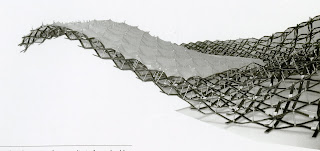 surface to tectonic expression
surface to tectonic expressionMonday, February 28, 2011
Monday, February 21, 2011

http://esciencenews.com/articles/2009/05/04/research.gives.clues.self.cleaning.materials.water.striding.robots
http://www.thenakedscientists.com/HTML/content/interviews/interview/1046/
checking out a few of these websites I was looking at self-cleaning materials. This first site is all about a microscopic surface logic that allows for water to repel off. The second site is talking about self-cleaning glass, that works by breaking down any organic material.
Wednesday, February 16, 2011
Tuesday, February 15, 2011
Phytoplankton



Phytoplankton live in the sunlit portions of the ocean and are capable of turning water and light energy from the sun into nutrients and oxygen through photosynthesis.
I thought this was interesting considering phytoplankton are single celled plant organisms, and I know we were talking about using a type of cellular structure in the skin designs.
Tuesday, February 8, 2011
Urban re(f)use An ecology of waste / tutored by François Roch

The Beauty of Nature



- The epidermis or outer layer of the leaf becomes the water collecting outer paneled skin.
- The spongy mesophyll becomes the water/air storage and bulging elements.
- The veins become the water cooling system.
Random Image


Prototype I and II: Thermo-Strut and Tracery Glass by Tom Wiscombe



Hydronic Heating and Cooling Methods




- System cools through radiative heat transfer by keeping a water and glycol mix within the tubes at a temperature of 65 degrees.
- Ventilation is important to manage indoor humidity and air quality.
- Heating of the water is necessary for hydronic heating. Possibilities for solar collection for heat.
- Typical Materials for the systems above include:
PPT files
green skin

Scenario:
1) Recognition of the “natural” fake of the place (polder developed on the lake)
2) Development of a strategy heterotopic, tentacular, uncertain, organic.
3) Scenarios of confusion between various natures - built natures (facade in hydro-aeroponiques, biodynamic green hairs) and urban, spontaneous, haunted natures, in order to generate a hybrid landscape, non-identifiable.
4) Using the photosynthesis of all green façades to recycle and clean waste water.
5) Introduction of this knotty geometry into indoor morphology of the exhibition rooms. A place where perdition, looseness is plausible, where the tangled up ambulation becomes the support of a collection which is not it less. Complexity is a tool of reprogramming and deprogramming, folding and unfolding.
6) Individual positioning by portable GPS, coupled to an informational PAD. The visitor use this i-compass to move and get more details (sound and video) on each art piece.

1) Digitization of the envelope of a traditional habitat.
2) Scooping out hollows within this volume as if it were an ice cavity, but in full wood by a 5 axes drill machine.
3) Water states and flows vary according to the seasons: The ice flows and freezes; the ice façades freeze and melt, forming a pond in front of the building.
4) Exacerbation of the winter climate by artificial snow (500 m3)
5) Construction by CNC machine processing, 5 axes, in full wood (2000m3-1000 trees) and reassembling the manufactured 180 pieces on site.
6) Reactivation of local economy





























